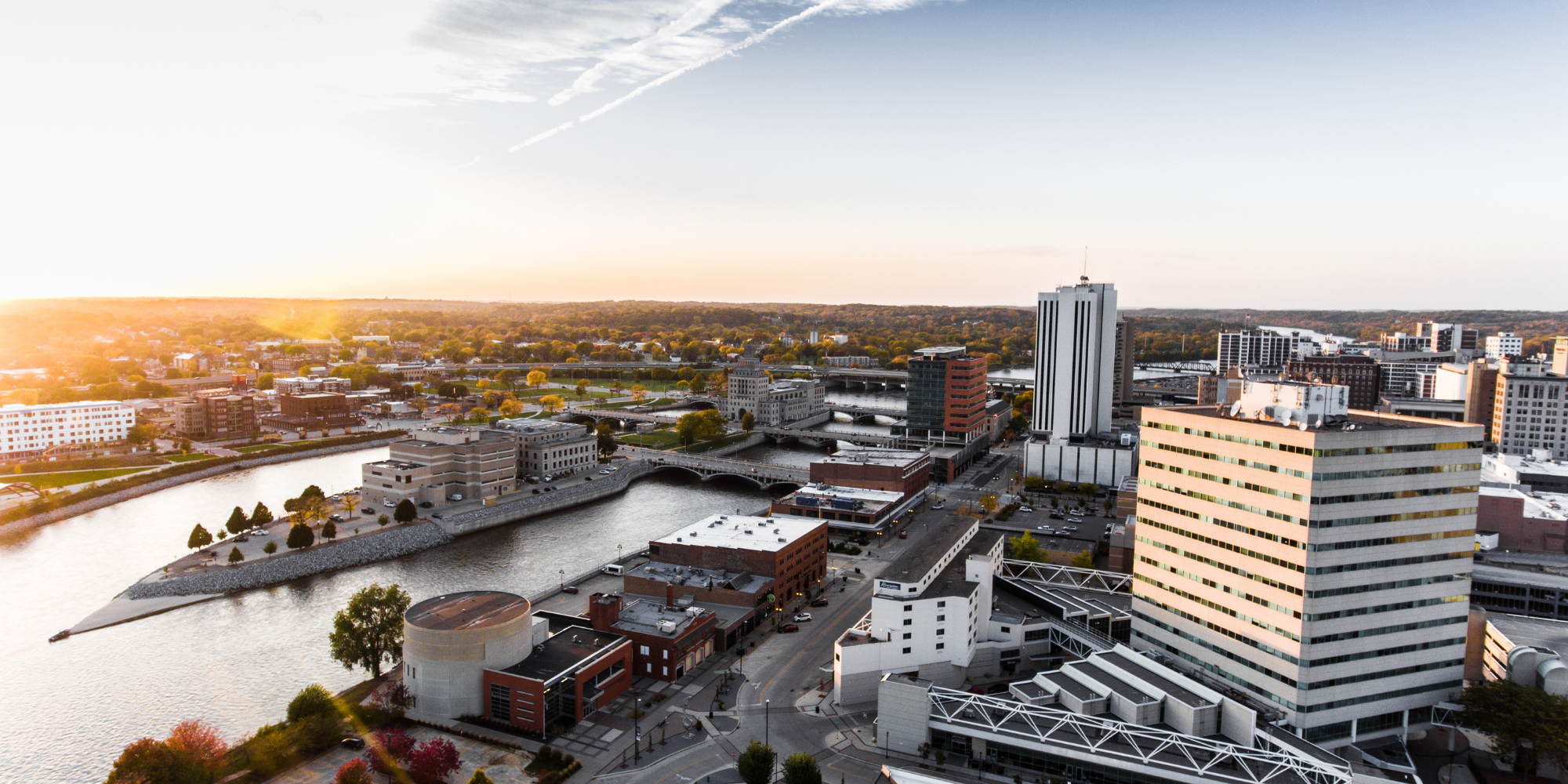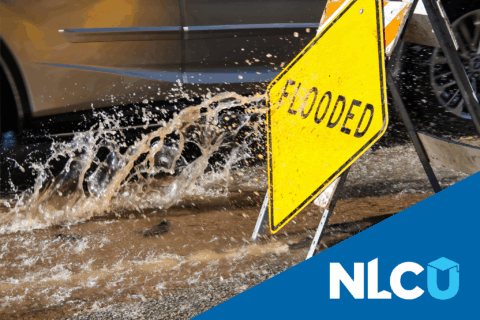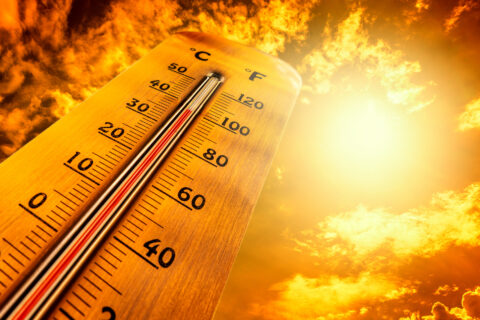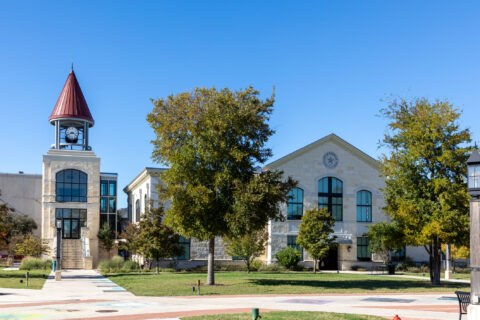On August 10, 2020, the worst thunderstorm in United States history pummeled Cedar Rapids, IA. Sustaining 90-140 mile-per-hour winds, the derecho wrecked 65% of the city’s tree canopy, damaged nearly every home and business and knocked out power for more than a week.
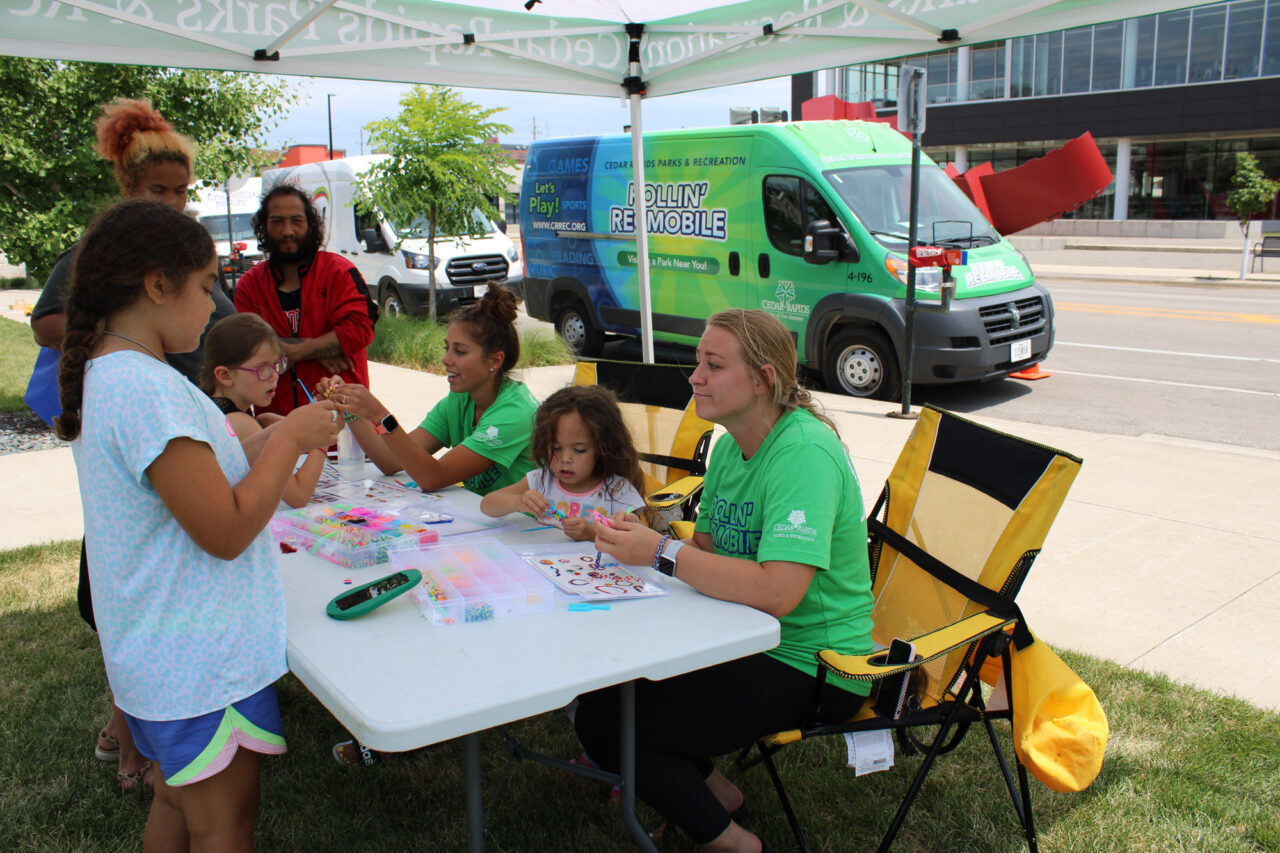
Staff from the city of Cedar Rapids as well as several non-profits, emergency response organizations and countless volunteers rapidly coordinated to create five Neighborhood Resource Centers (NRCs) in the city’s most at-risk neighborhoods in the wake of the storm. These sites would support the urgent and daily needs of residents: water, ice, food, diapers and formula, forms to apply for assistance and charging stations. Perhaps most importantly, the NRCs served as hubs for residents to feel safe and connected with their neighbors.
Just months before the August disaster, the Cedar Rapids City Council declared an urgent need for community climate action and announced goals for carbon neutrality, climate resilience, prioritizing low income and other at-risk residents on climate issues and creating a direct line of communication to city government regarding these matters. After the derecho, Cedar Rapids Sustainability Director Eric Holthaus and Community Service Coordinator Stephanie Schrader launched a community engagement campaign that did outreach to over 1400 residents via surveys to get their feedback on existing and potential city services. Not surprisingly, residents expressed an overwhelming appreciation for the NRCs that appeared in their communities after the derecho, and many requested that NRCs have a year-round presence. However, most survey respondents were not from lower-income neighborhoods and most were white.
Enhancing an Existing Program
Holthaus and Schrader sought another opportunity to create a more inclusive engagement process and simultaneously address the community’s desire for a standing NRC presence. They decided to use grant funds from NLC’s 2021 Leadership in Community Resilience program to build on a successful Park & Recreation initiative called “Rollin’ Recmobile.” Since 2020, the big green van had been delivering structured and unstructured games, sports and arts to youth in community parks six days a week, engaging an average of 260 kids each week. The new and improved Rollin’ Recmobile would be an NRC on wheels – and an opportunity for underserved residents to engage directly with city officials at their convenience.
In the summer of 2021, Holthaus and Schrader worked closely with local partners including the Cedar Rapids Library, Feed Iowa First, Iowa Legal Aid and Green Iowa AmeriCorps to enhance Rollin’ Recmobile’s services and include the distribution of emergency preparedness items such as flashlights, water bottles and insulated grocery bags, as well as information on how to beat the heat and what to do in case of another derecho. Schrader was pleased with the results, saying “it’s been great to take a whole-community approach to resilience and help our neighbors be ready to go when the next disaster strikes.”
Rollin’ Recmobile: By the Numbers in 2021
- 15 parks each week in the summer (and a few farmers’ markets)
- 129 events total
- 35 local partner organizations logged over 800 hours of active engagement.
- Nearly 5000 youths and parents received helpful household items and information on emergency preparedness
- Youth engagement increased from 260 children a week to over 330 children a week
Learning More About Effective Engagement
Over the summer, Holthaus and Schrader attended ten Rollin’ Recmobile events in parks and farmers’ markets across the city to hear about resident priorities. They were eager to engage with communities that had historically been left out of planning processes and to use what they would learn to inform the city’s Community Climate Action Plan (CCAP), which Holthaus and his team were actively developing at the time. Although the second round of surveys rendered fewer respondents overall, they noted that in-person engagement was the best way to maximize participation among under-represented communities, including lower-income and non-white respondents. Holthaus said, “After the first round of surveys, we learned that meeting people in their neighborhoods took more time but built more meaningful relationships. These connections helped us during the CCAP planning process and would ultimately create a plan with more equitable outcomes.”
How Residents Responded
Feedback from both surveys was incorporated in the CCAP, but the second survey was particularly helpful in identifying the needs and priorities of lower-income and non-white residents in Cedar Rapids.
278 residents participated in the second round of engagement:
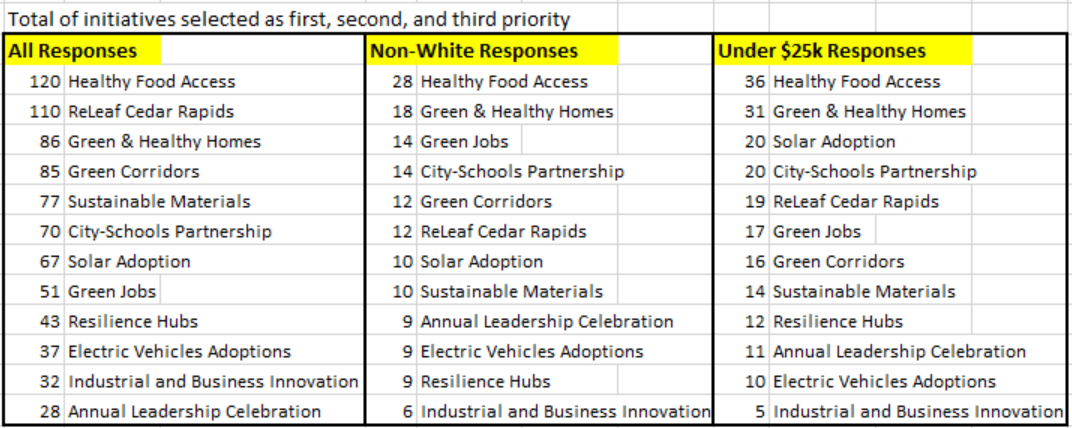
City Changes
On September 28, Cedar Rapids City Council adopted the CCAP with a sweeping 8-0 vote, a move that greenlit sweeping action on climate hazard mitigation, community preparedness and reducing greenhouse gas emissions – all while prioritizing at-risk neighborhoods. The city will focus on two issue areas to start: housing and social services. Resident input from all corners of the city was key to plan development and their support will be key to implementation. In five years, staff and leadership will revisit the plan to note where progress has been made and where revisions might be needed. Moving forward, the sustainability team is now developing an equitable engagement toolkit to share with other city departments.
Sustainability staff across the country, including those in Cedar Rapids and other NLC Leadership in Community Resilience grantee cities such as Sarasota, Cincinnati, Evanston, Dubuque and Ann Arbor are not just demonstrating leadership on equity when it comes to climate-related work, but are setting the tone for colleagues in other city departments as everyone strives to support communities as equitably as possible.
